|
|
Post by bhk on Aug 11, 2006 17:28:04 GMT -5
Royce, Good spotting! Cripes....I hadn't associated those facts with the photos and now that you've pointed them out - particularly the one about the Japanese - it certainly makes sense. The tall British military chap is part of a jovial little group of four...and he has an accomplice....note the same hat-badge on the shorter fellow third from his right....next to the bloke smiling. As you say....appeasement was cruising along.  Great photos! Bruce |
|
|
|
Post by cptroyce on Aug 11, 2006 21:21:24 GMT -5
Bruce- As long as we're doing some photo analysis ;>)
>>And as for the Sioux indian in that first pic which features him, isn't that just a fantastic photo?! Look at his wonderful face.......that man was probably at the Battle of Little Big Horn!<<
Not likely..Big Horn battle was in 1876..the person pictured looks to be about late fifties early sixties. Those pics are from the late 30's, so the dates don't co ordinate. Also, note the large square metal ring and the cigar, nicely lit and half smoked the "chief" is holding..interesting juxtapositon :>)
Royce
|
|
|
|
Post by bhk on Aug 11, 2006 23:22:17 GMT -5
.....Not likely..Big Horn battle was in 1876..the person pictured looks to be about late fifties early sixties. Those pics are from the late 30's, ...... 'Twas a tongue-in-cheek line, Captain.  More a reference to his wrinkled visage than anything. Yes...I see what you mean about the see-gar!! ;D Bruce |
|
|
|
Post by 314clipper on Aug 12, 2006 9:13:07 GMT -5
You guys are sharp! Thanks for bringing up some good points on the historical context and the details.  Very glad to hear that you are enjoying the pictures. I thought the ones of the Sioux chief were the most intriguing of the bunch. Wouldn't you love to know the rest of the story behind that little pow-wow! Here are a couple of my favorites --- especially the last one: it is simply titled "Nachflug". Thanks to Me262 for his help on interpretation of the Tempelhof night lighting chart.  I'll post some more later. Thanks, Wayne Tempelhof Night Lighting Rote ansteuerungs-lichter = red beacons Neonröhren zur bezeichnung d. grenzen = neon tubes to mark the boundaries beleuchtung des hallenvorfeldes = apron lighting windrichtungsanzeiger = wind tee scheinwerfer = headlight --- rotating beacon? landebeleuchtung - sturmlaternen = landing lighting - storm lanterns 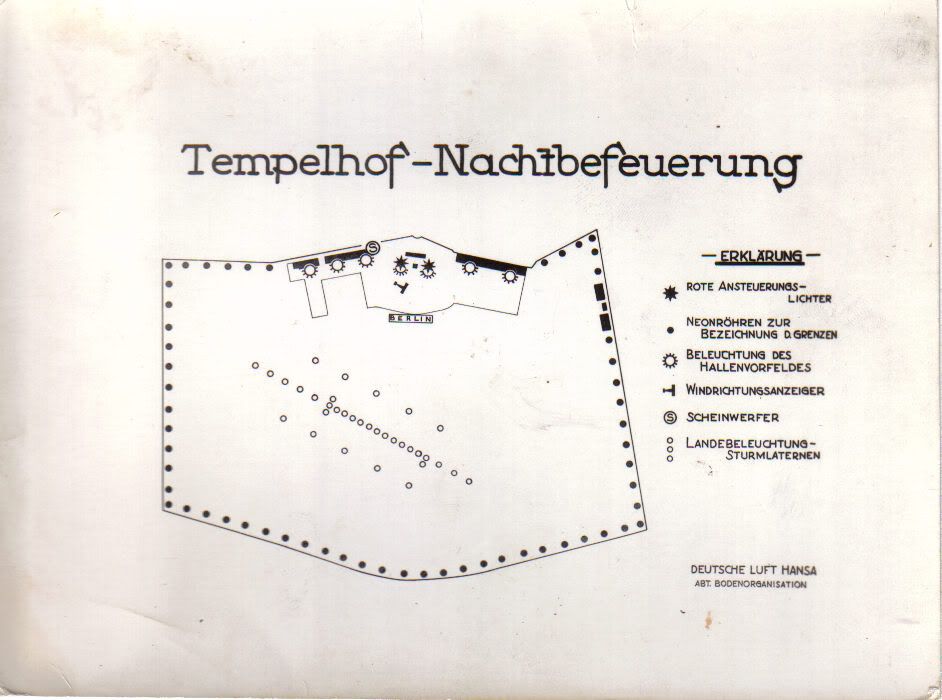 Tempelhof hangar at night. Aircraft is Messerschmitt M20 D-2341 Harz (w/n 546), delivered in 1932. It was later re-registered as D-UKIP, then sold to VARIG as PP-VAK in 1937.  "Nachflug" --- kind of atmospheric, don't you think? 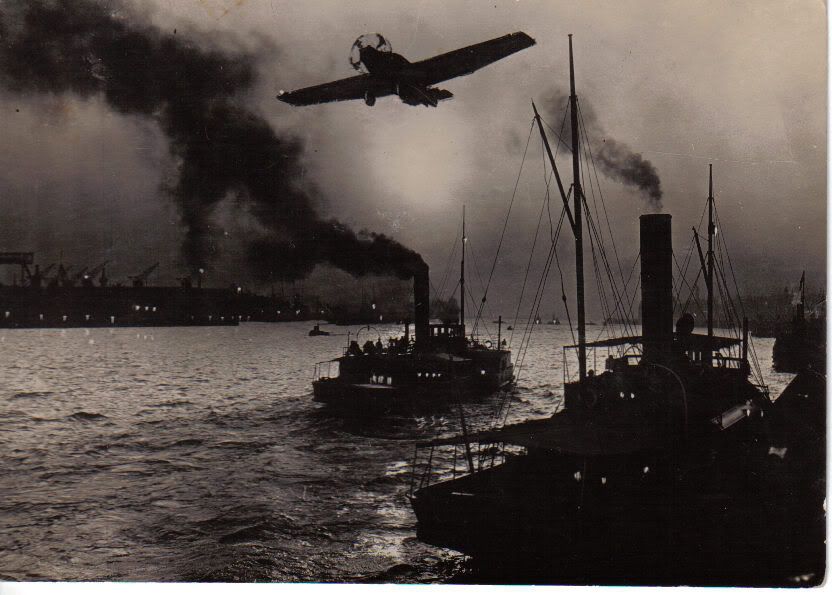 |
|
|
|
Post by Slide on Aug 12, 2006 9:40:17 GMT -5
;D Priceless, these pictures and the comments!
|
|
|
|
Post by cptroyce on Aug 12, 2006 16:08:20 GMT -5
314 Clipper- In regard to the two Indian photos, the dress of all involved seem to indicate 1920's not 1930's. The man and women prominent, appear to me at any rate, by dress and demeanor, to be American. But surrounding group appear European(German?). Note cap on young boy on right and beret on young women to left. Also, Sioux Indian probably is a guest of the man and women as he is boarding the plane ahead of the women (normally not customary). Perhaps they brought him along on the European trip to impress the Junkers??
See attached.
All speculation but I find it enjoyable ;>)
>> In late 1919 the American business man John M. Larsen visited Europe with the intension to sell U.S. built aircraft here. While in Denmark, Larsen heard about the Junkers built F13, which had great success in Europe. Larsen went to Dessau for a presentation of this aircraft. He was interested in a license production of the F13 in the USA. On November 27th 1919 a contract was signed between Junkers and Larsen about the delivery of a total of 26 Junkers F13 aircraft to Larsen. <<
Regards,
Royce
|
|
|
|
Post by bhk on Aug 12, 2006 17:49:48 GMT -5
The Me in the hangar and that last one.....stunning! Note the use of the touch-up pen in "Nachflug"....the propellor (or "airscrew", to use the British term of the period) has definitely been interfered with. In fact, on closer inspection, it looks as if the complete aeroplane has been inserted into the photo. Great stuff, Wayne. More!! More!  Bruce |
|
|
|
Post by 314clipper on Aug 13, 2006 18:40:54 GMT -5
Here are some pics focusing on the aircraft used by DLH in the 1930s... Junkers Ju 90 prototype D-AALU Der Grosse Dessauer, introduced in 1937. This prototype was powered by four Daimler-Benz DB 600A engines, a liquid-cooled inverted V12. Later aircraft used BMW radials, primarily the BMW 132H. 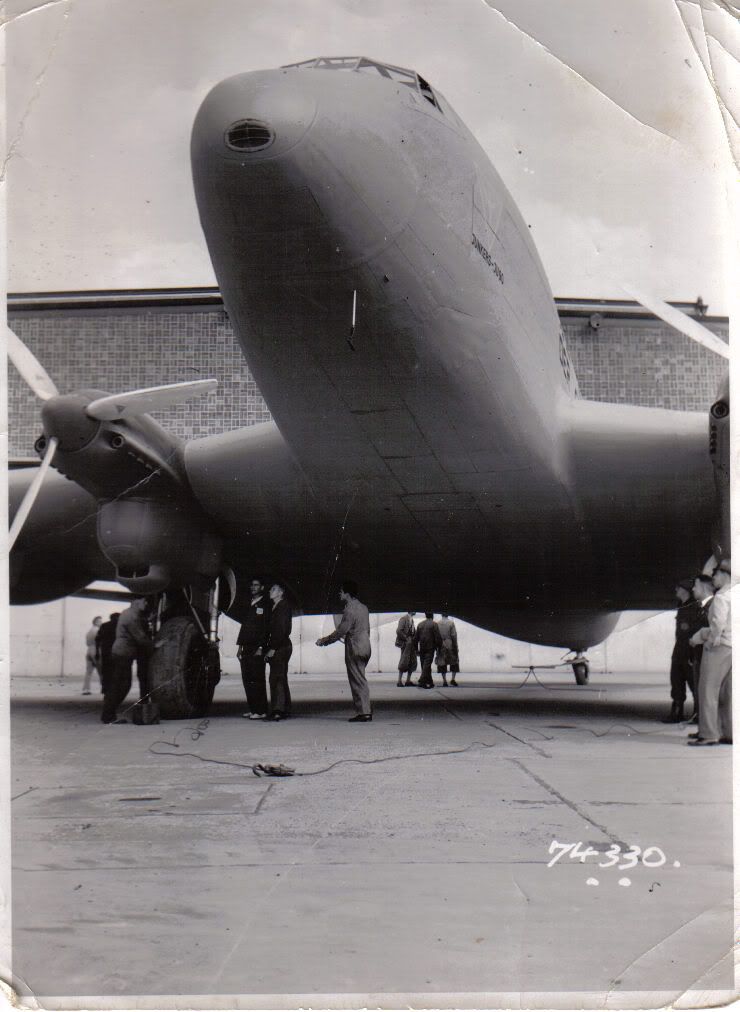 The production Junkers Ju 90 carried 40 passengers and had a built-in luggage loading bridge. 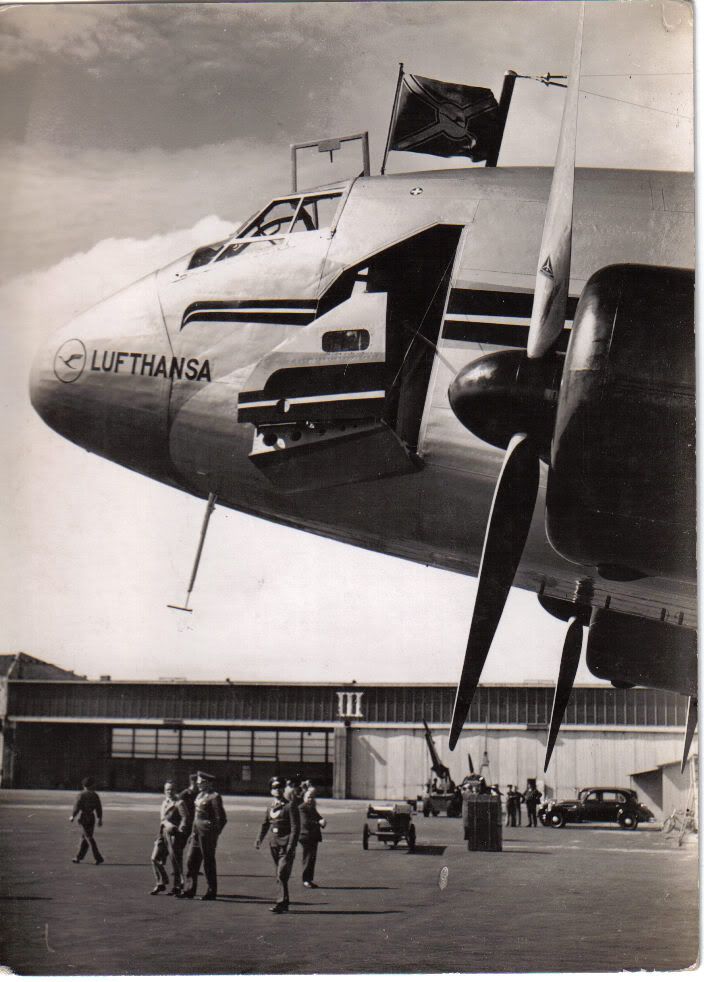  Junkers Ju 90 D-AURE Bayern (w/n 4915), built in 1938, was destroyed at Stuttgart during a bombing raid in September 1944.  Junkers Ju 90 D-ABDG Württemberg (w/n 001), built in 1939. Note the Iron Cross markings applied to the fuselage. 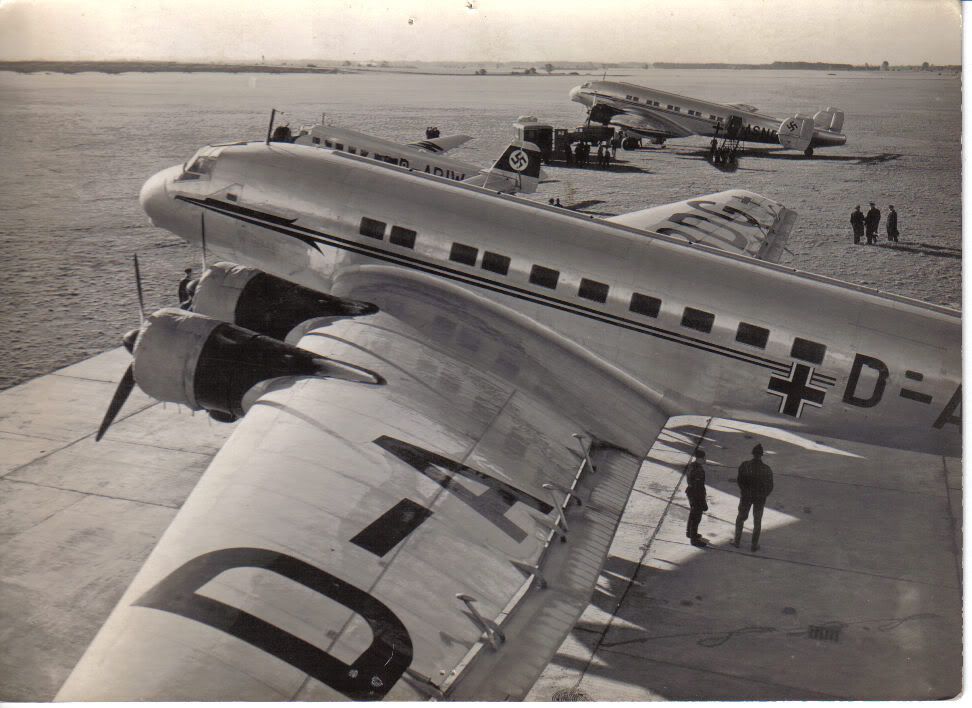 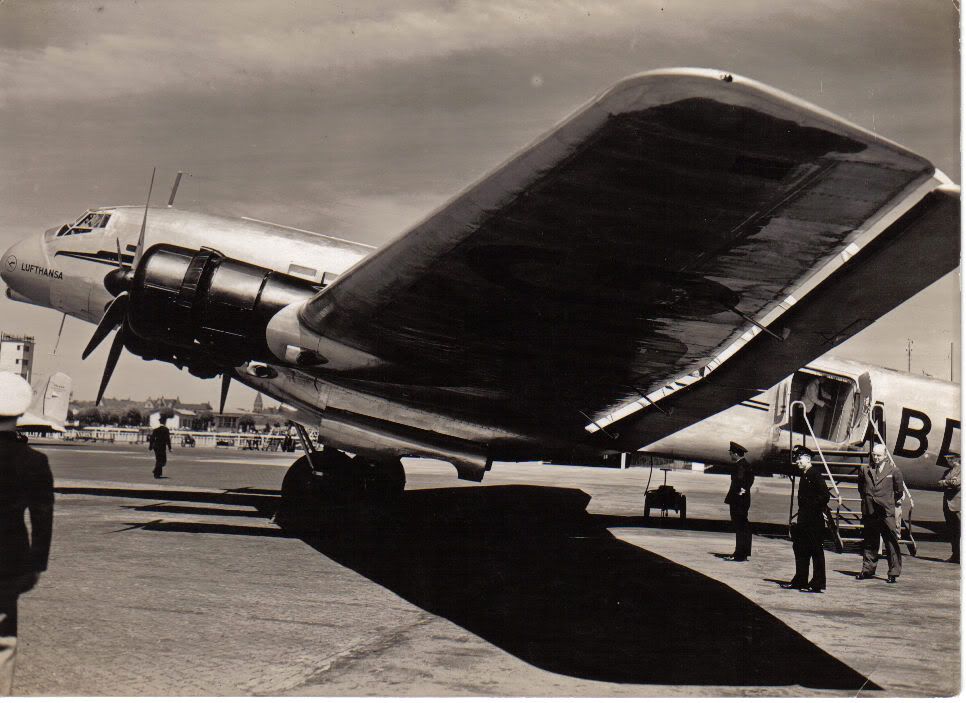 Junkers Ju 90 D-ASND Mecklenburg (w/n 006), also built in 1939. 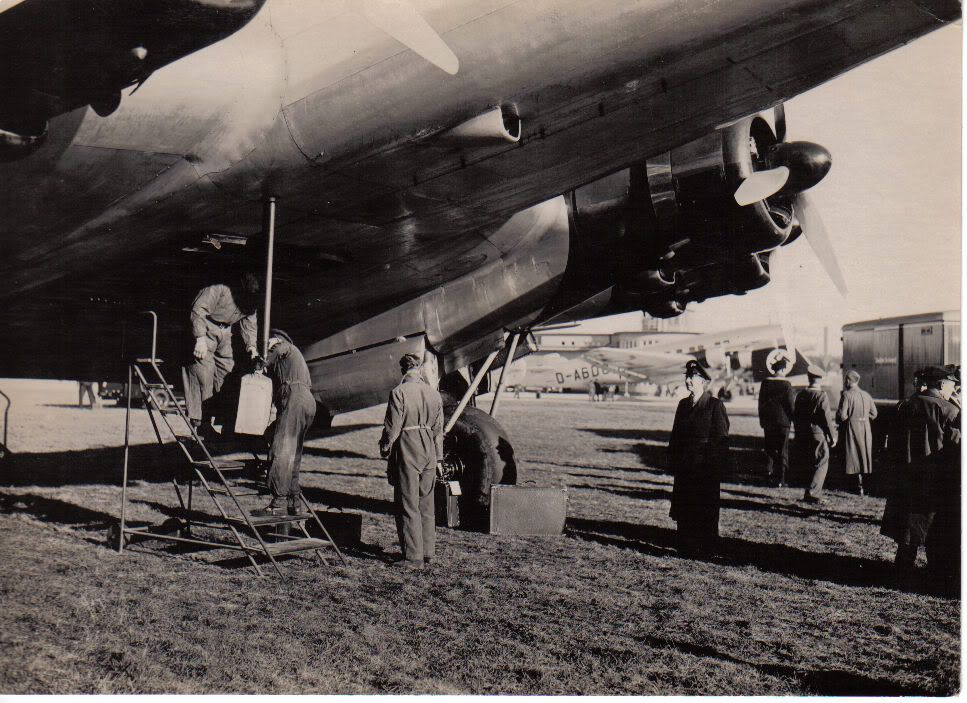  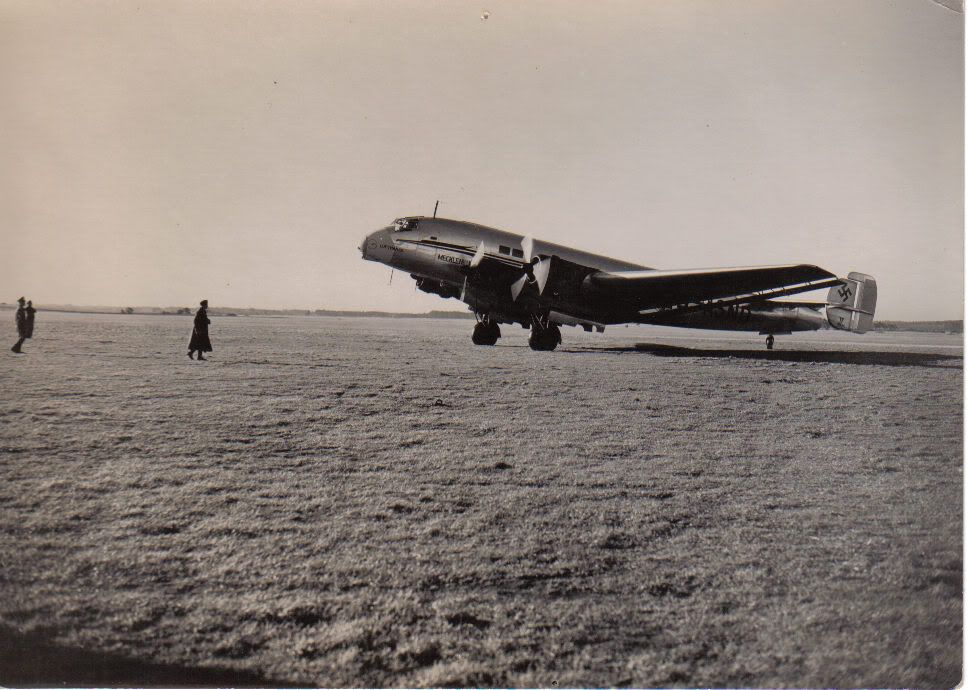 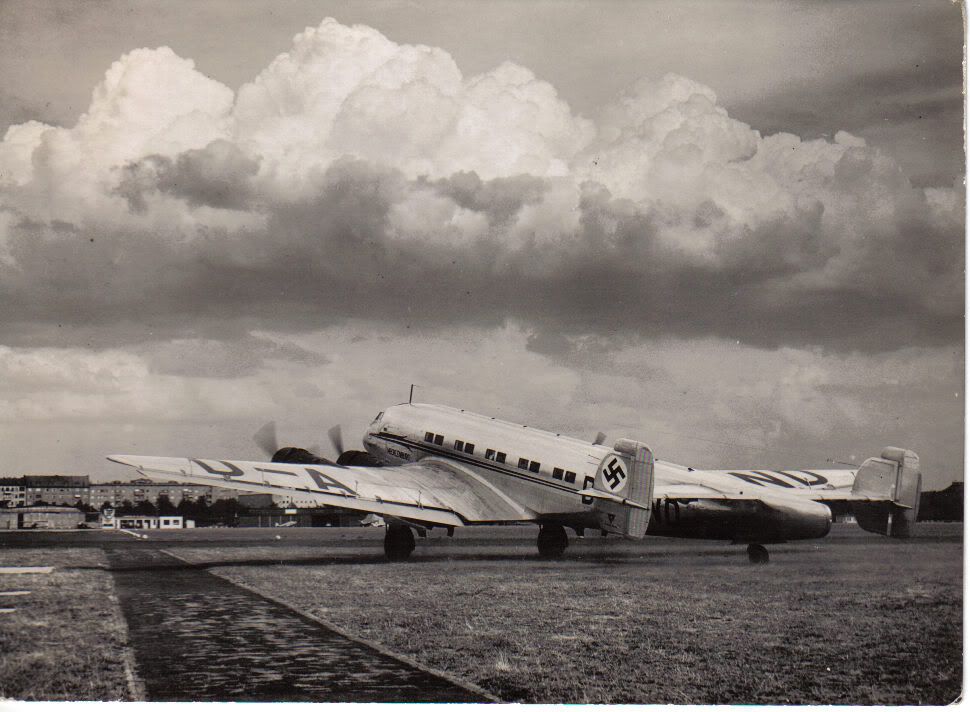 Heinkel He 111C-03 D-ABYE Königsberg, operated by DLH from 1936 to 1940. 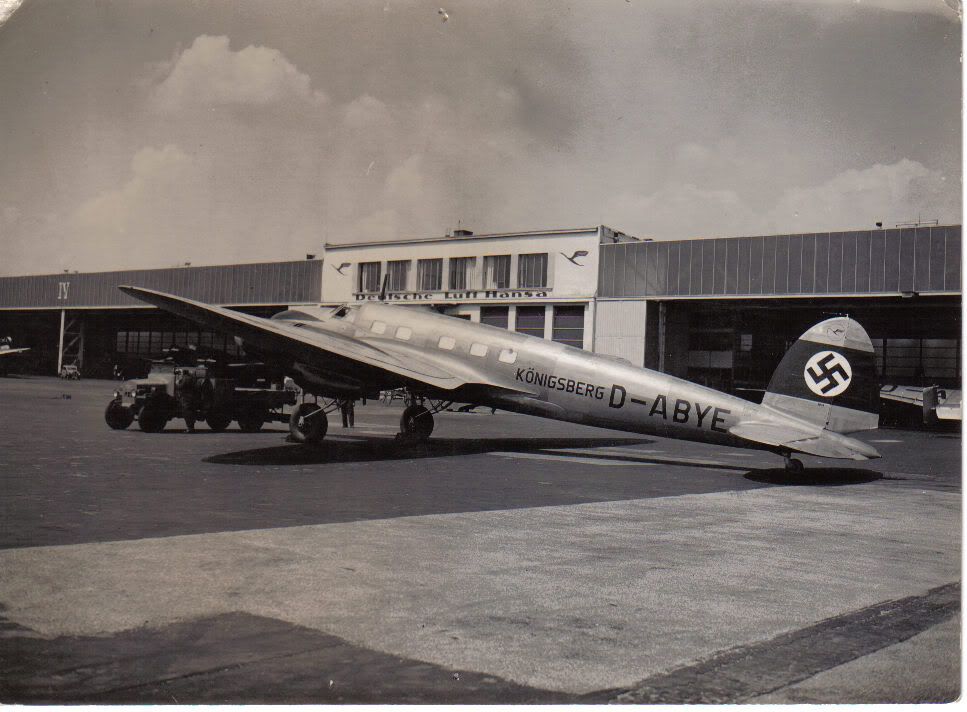 Heinkel He 111C-01 D-AQYF Leipzig, operated by DLH from 1936 to 1940. 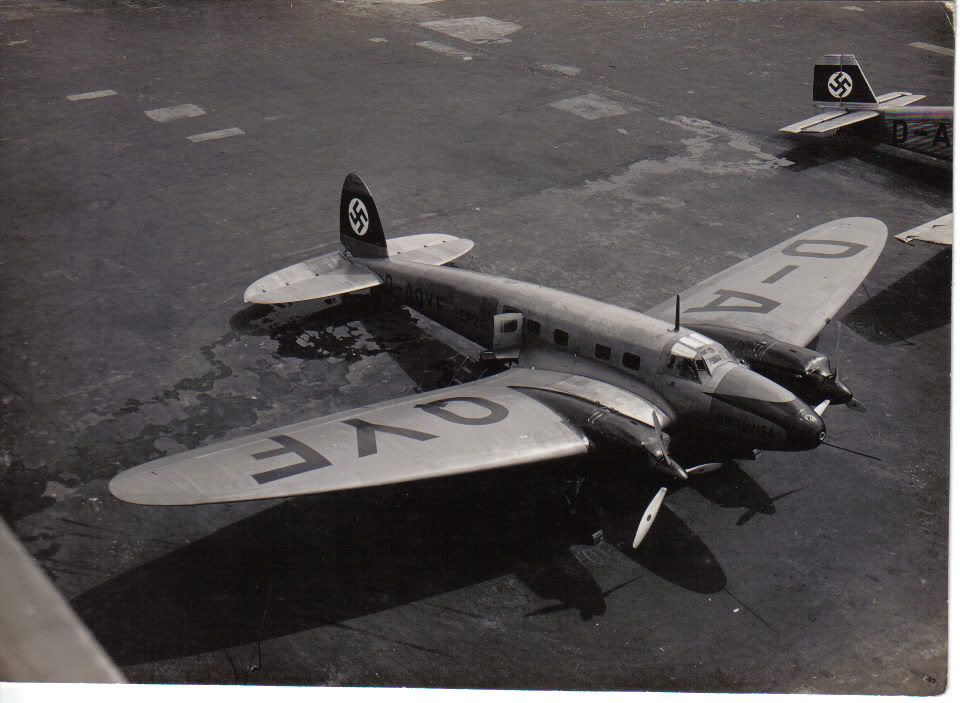 Heinkel He 111C D-ALIX Rostock, parked to the right of a Junkers Ju 86, circa 1936 or early 1937. He 111C D-AXAV Köln is seen overflying the field, while Junkers Ju 160 D-UHIL Kreuzfuchs and an unidentified Heinkel He 70 are parked in the background. Rostock crashed in March 1937 while landing in Gambia after a flight from Las Palmas. Köln crashed at Mannheim in November 1937.  The He 111C and the Junkers Ju 90 are available for FS9 --- do a search at flightsim.com for the author, Hauke Keitel. The models are very good, and include a vc. More pics later. Wayne  |
|
|
|
Post by bhk on Aug 13, 2006 22:06:29 GMT -5
Wayne, Fabulous stuff!  The He-111 as a passenger aircraft is very attractive; I like the nose more than that for the bomber variant. Now off to search for those two models.  Bruce P.S. I just realised that Herr Keitel is the creator of not only that excellent Fw-200 Condor but also the metric gauge package. (I wonder if he is related to Field-Marshall Keitel?) BK |
|
|
|
Post by windrunner on Aug 14, 2006 2:14:35 GMT -5
Yes, that Nachtflug pic seems a morphed one. Remembers some of those commercial posters of the time. I wonder how many planes were developped then, and we only knows a few (mainly those that were transformed for war duties). BTW, wich was the direct american competitor to the JU90?
|
|
|
|
Post by bhk on Aug 14, 2006 4:31:48 GMT -5
|
|
|
|
Post by Slide on Aug 14, 2006 10:15:31 GMT -5
I also think it would have been the Boeing Stratoliner. Darn WW2 converted all these beautiful birds into scrapmetal - or bombers...
|
|
|
|
Post by windrunner on Aug 14, 2006 11:29:52 GMT -5
Genau Slide! the B307 Stratoliner may have been the Ju90 competitor, first flown in 1938, it could carry 33 passengers in a pressurized fuselage (the first one in a commercial plane).
I'll have to check the brit side, but as far as I remember the Albatross could be the one, even if smaller.
|
|
|
|
Post by leylandspurr on Aug 14, 2006 11:39:01 GMT -5
I agree with everone's comments, but shouldn't this stuff have it's own home on the internet - as a research tool for all to use?
Hope to see a mad rush of new 30's European scenery to use the existing plane models we already have for this era (and hopefully some new ones). The Devau and Koenigsberg (same place) ones that are already available might make a starting point.
Leyland
|
|
|
|
Post by bhk on Aug 14, 2006 15:50:20 GMT -5
....shouldn't this stuff have it's own home on the internet - as a research tool for all to use?.... How great it would be if Wayne could publish them at their own URL in order to make them available to a wider audience. Any chance of that occurring, Wayne? Bruce |
|